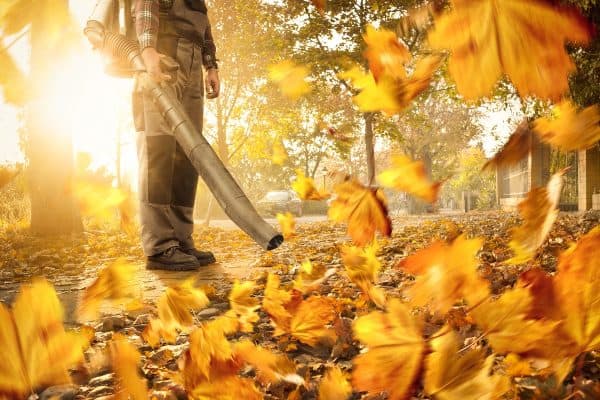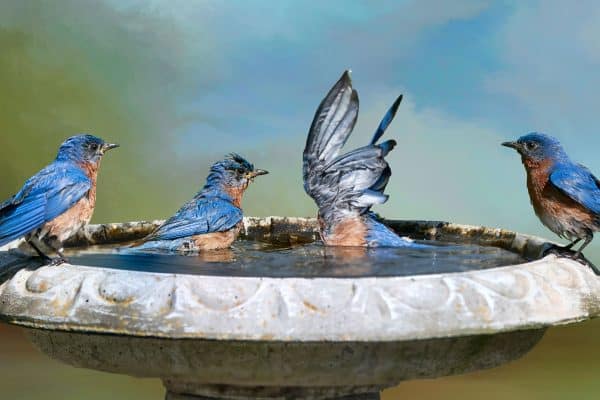Having an arbor with a gate provides beautiful scenery in your garden. It makes your guests feel comfortable when they want to sit in the outdoor part of your home. Are you keen to know how to build a garden arbor with a gate? You're on the right page because we have consulted building experts and here's what we learned.
To build a garden arbor with a gate you should follow these procedures:
- Designate the area the arbor will overarch, typically rectangular, and mark using staked twine.
- Use a post hole digger to dig a two-foot deep hole at each corner of the demarcated area -these holes will be used to secure the arbor after it has been constructed.
- Prep each hole with gravel and insert 8x4 foot posts into each. You'll backfill these holes when the arbor goes up.
- Construct the arbor. (Detailed measurements and instructions below!)
- Construct the gate. (Detailed measurements and instructions below!)
- Mount a latch and hinges on the gate and install at least 4 inches from the ground positioned between the front two arbor posts.
To learn more about building gates at the garden arbor, keep reading as we would explain more about the processes needed to build one.

What Is a Garden Arbor?
A garden or yard gate, path, or bench can be adorned with an arbor, which also offers shade, shelter, and privacy. Additionally, arbors add appeal and value to homes. You can utilize an arbor to give climbing flowers, fruits, and vegetable support.
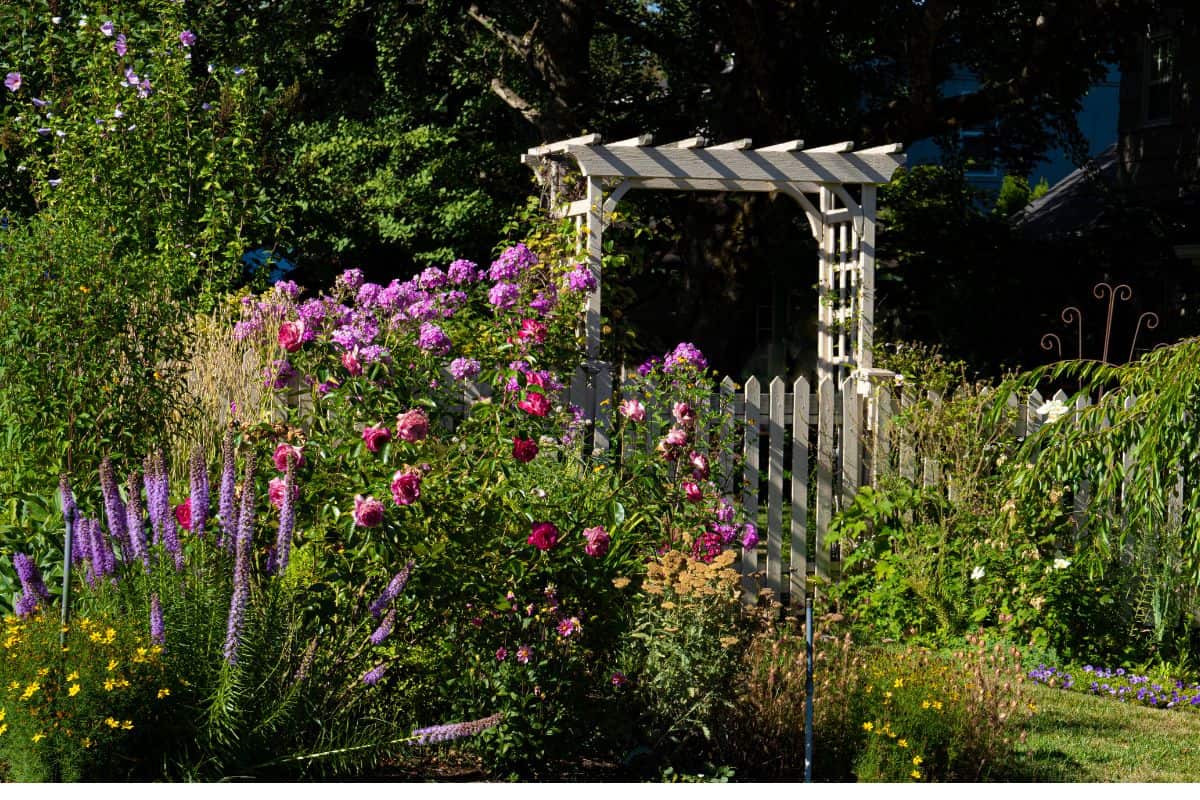
A flat, arched, or pointed roof can be found on an arbor, which is frequently a standalone building. A gate, bench, patio, or garden path can be shaded by the tunnel-like effect the roof and sides provide.
Arbors vary considerably. An arbor can be built in a variety of materials, sizes, and locations.
How To Build a Garden Arbor With a Gate
Before building an arbor with a gate, there are certain things you should do in order not to make mistakes.
First, you need to construct an arbor. I'm doing so, you need to follow these procedures:
- Inside the spot where your arbor will be, draw a rectangle 2 feet by 4 feet wide. To ensure it is straight, mark the rectangle with stakes and twine.
- Use a post hole digger and dig a deep hole in the corners of the rectangle. It should be 2 feet deep. Place a little amount of gravel in the bottom of each hole before inserting an 8-foot-long, 4-by-4-inch post into each one.
- Cut four pieces of 2-by-4-inch lumber to a length of 24 inches. On the short side of the rectangle, place one piece across two posts, and secure it to the posts with four 3-inch screws on each side, four inches above the ground.
- Attach a second board 4 inches from the top over the same two posts. Continue around the arbor's other side.
- Measure 48 inches in length for two additional pieces of 2-by-4-inch lumber. Cross the first board over the first two posts, and fasten it with screws four inches up from the top. Repeat along the arbor's rear, using the same method to fasten the boards.
- To secure the arbor, backfill the post holes and compact the soil tightly around the posts. Lattice is cut into two sections, each measuring 64 by 24 inches. Every six inches, fasten the lattice to the top and bottom boards of the arbor using 2-inch screws.
- Attach a 4-foot-long string to a 4-by-8-foot sheet of plywood that is three-quarters of an inch thick in the middle.
- Draw a circle with a 4-foot diameter by tying a pencil to the end of the thread. Trim the string's end to 6 inches, then draw a smaller circle inside the larger one. The centers of the circles should be crossed with a ruler.
- Using a jigsaw, cut the plywood along the lines. When you are finished, you will have 6-inch wide, 24-foot-long arches. These will be the arbor's topmost branches. With its ends resting on the 2-by-4-inch board, position one of the arches across the front two posts. Four 3-inch screws are used on either end of the arch to secure it to the posts. Repeat across the arbor's back.
- Trim four 1-by-1-inch lumber pieces to 32 1/2-inch lengths. The lumber should be evenly distributed between the two arches. The arbor's top is created by screwing the components together. Utilizing 2-inch screws, fasten the board by driving them through the plywood and into the ends of the 1-by-1 boards.
Establishing The Gate
- Cut two pieces of 2-by-4-inch wood to 44 inches in length. These components will form the gate's top and bottom. For the diagonal gate support, cut a third board 40 inches long.
- Parallel to one another and 36 inches apart, place the top and bottom boards on a flat surface. The diagonal bracing should be placed across the two boards diagonally and fastened with four 3-inch wood screws on each end.
- 40-inch long planks made of ten 1-by-1-inch boards were cut. The pickets for the gate will be there. Toggle the gate frame around.
- With the extra sticking over the top board, place a picket across the top and bottom boards. At each end of the board, screw a 2-inch screw to secure it. Leave 4 inches between each picket as you continue putting them in the same manner. Utilize a leftover 2-by-4 as a spacer.
- Mount a latch on one side of the gate and gate hinges on the opposite side. Hold the gate 4 inches off the ground in between the front two posts of the arbor. To fasten the gate, screw the hinges onto the post of the arbor.
How Tall Should a Garden Arbor Be?
The average height of a garden arbor is 8 to 10 feet, giving you plenty of space to walk underneath while still being able to maintain vines or other plants that are growing high above.
An arbor is supported by columns or pillars, which in turn support horizontal beams, rafters, or arches, whether the arbor is freestanding or attached.
What Wood Should I Use For an Arbor?
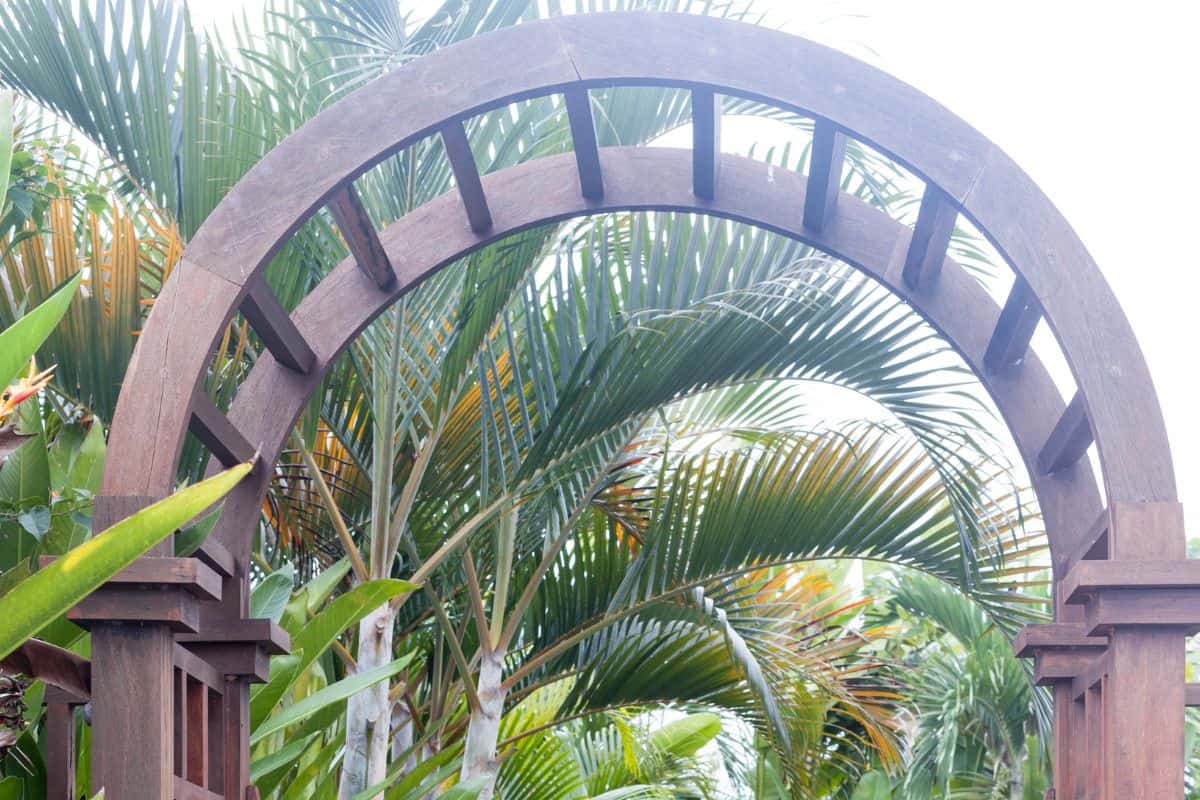
There are many different considerations to make while constructing an outdoor arbor or pergola. Make sure the hardwood you select can withstand outside pests like beetles and other bugs as well as the weather.
You'll want to be certain that you choose the ideal hardwood for your area's environment when making your decision from among the available variables. Additionally, you should pick a hardwood that has a pleasing appearance.
Ipe
Ipe is a superb choice for hardwood. This wood is said to be as hard as nails and comes from the Brazilian rainforest. Ipe is a highly dense wood, hence it is advised that holes be predrilled for screws and nails.
Ipe hardwood is one of the strongest hardwoods available, and its strength has been compared to that of steel. Most A 25-year or longer warranty is offered on ipe wood. This natural wood is resistant to the elements, mold, and pests.
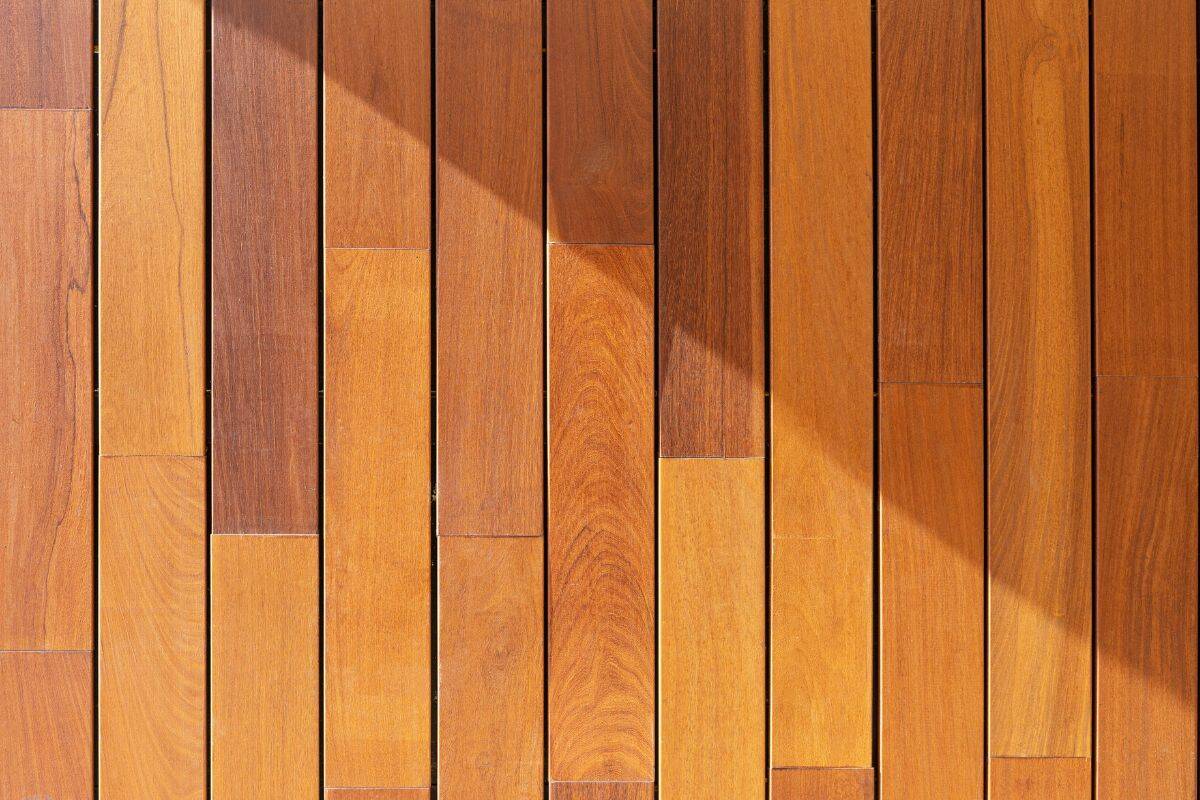
Garapa
Garapa is another wood with a high density. Brazilian ash is another name for the Brazilian hardwood garapa, which is native to Brazil. This wood is both extremely attractive and strong.
This wood is a lovely golden brown tone. The garapa wood has a warm, inviting appearance that will gradually darken with time. If left to weather naturally, it will acquire a silvery appearance similar to that of the Ipe wood.

Tigerwood
Exquisite exotic hardwood from Brazil is called tigerwood. Tigerwood is quite distinctive and has a varied pattern. It has a reddish-orange background with a stripe running from dark brown to black. Very thin to very bold lines are used for the striping.
As tigerwood is a fairly dense wood, similar to other exotic hardwoods, predrilling is advised. If tigerwood is allowed to weather naturally, it will eventually get progressively darker. Tigerwood is incredibly smooth and splinter-free, and it naturally lasts well.
What Is The Difference Between An Arbor and Trellis?
Trellises and arbors are two quite different types of constructions, even though the terms are frequently used interchangeably. A complete landscaping strategy that may also incorporate lighting, a patio or terrace, and one or more of these buildings could be implemented.
Typically, a trellis is a latticework constructed to support vines or climbing plants. Simple examples are a panel fastened to a building's side or a freestanding structure in a garden or yard.
A trellis is typically incorporated into an arbor's design to support climbing plants and create a passageway-like tunnel. Latticework runs continuously through an arbor from one side to the other, frequently in the form of an arch.
Does An Arbor Need a Base?
The base is a crucial component of the arbor. The arbor area shouldn't be impacted significantly by this. As a general guideline, your base area needs to be smaller than the seating area on your patio.
The base shouldn't take over the designated space, such as the garden or pathway. The foundation, however, must be sound and appealing.
In Summary

A garden or yard gate, path, or bench can be adorned with an arbor, which also offers shade, shelter, and privacy. An arbor can be built in a variety of materials, sizes, and locations. It can provide climbing flowers, fruits, and vegetables with support.
To Build a garden arbor with a gate you start first by constructing the arbor and the gate by using the right measurement of lumber.
For more on outdoor construction, check these engaging articles:

![A man using a portable vacuum to collect dead leaves, Will A Leaf Vacuum Pick Up Mulch? [Can It Remove Leaves From Mulch?]](https://landscapingbase.com/wp-content/uploads/2022/09/Man-using-a-portable-vacuum-to-collect-dead-leaves-600x400.jpg)
